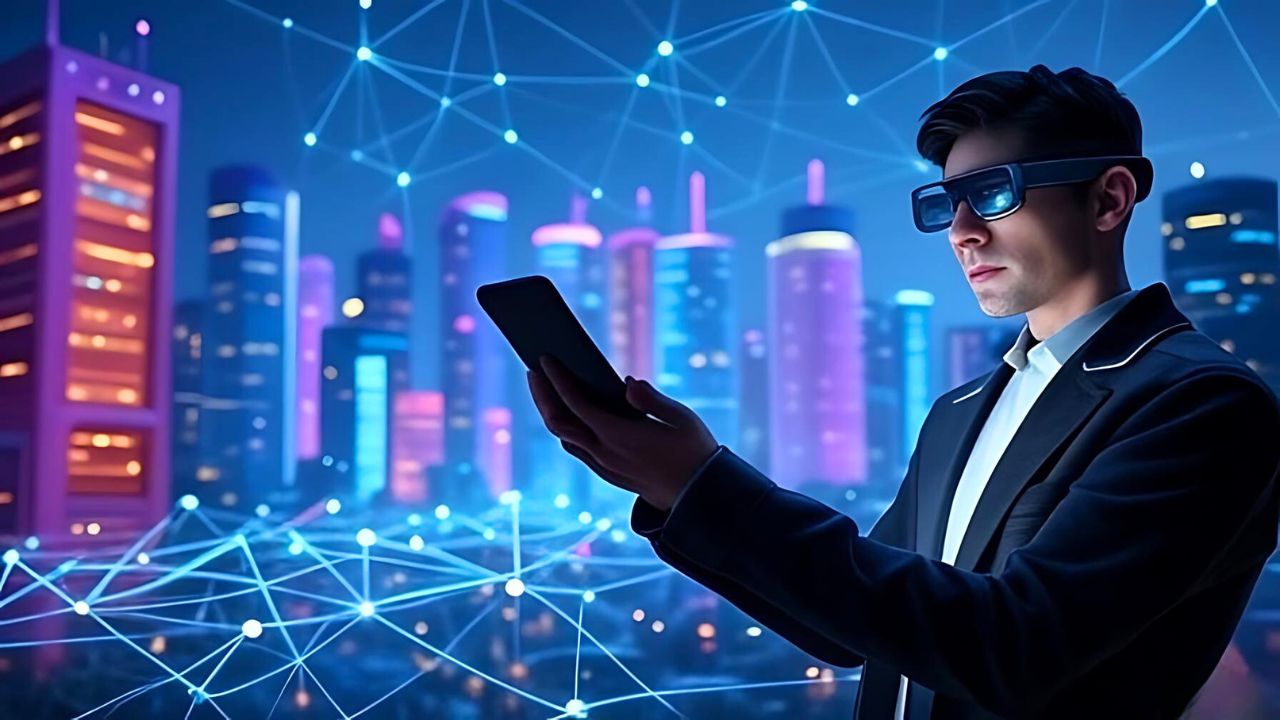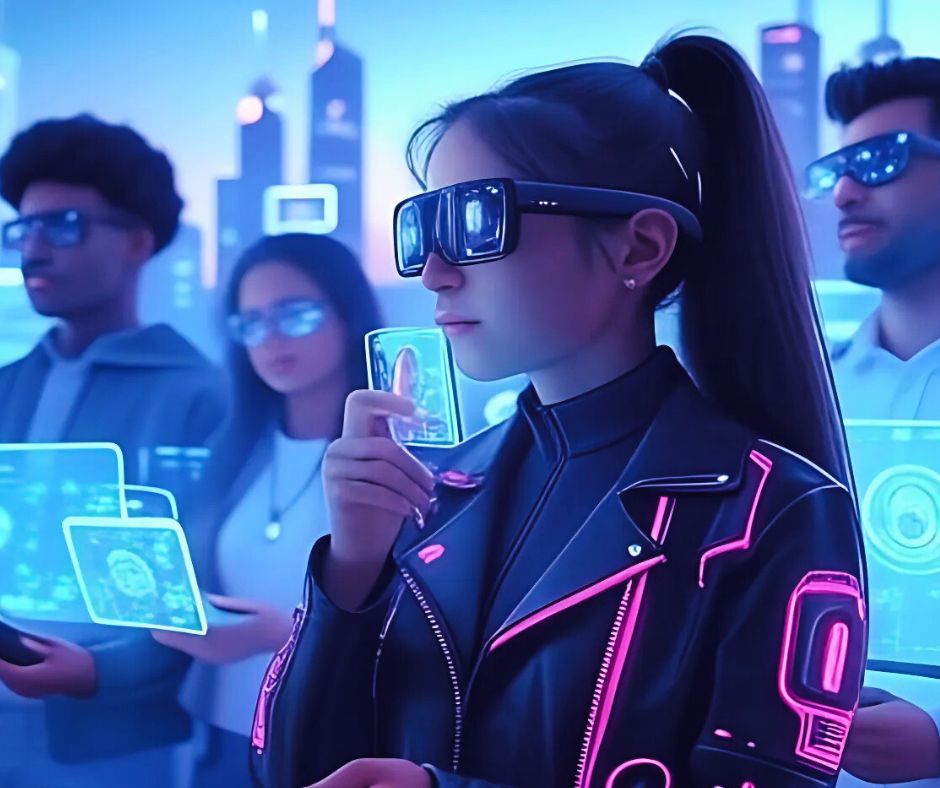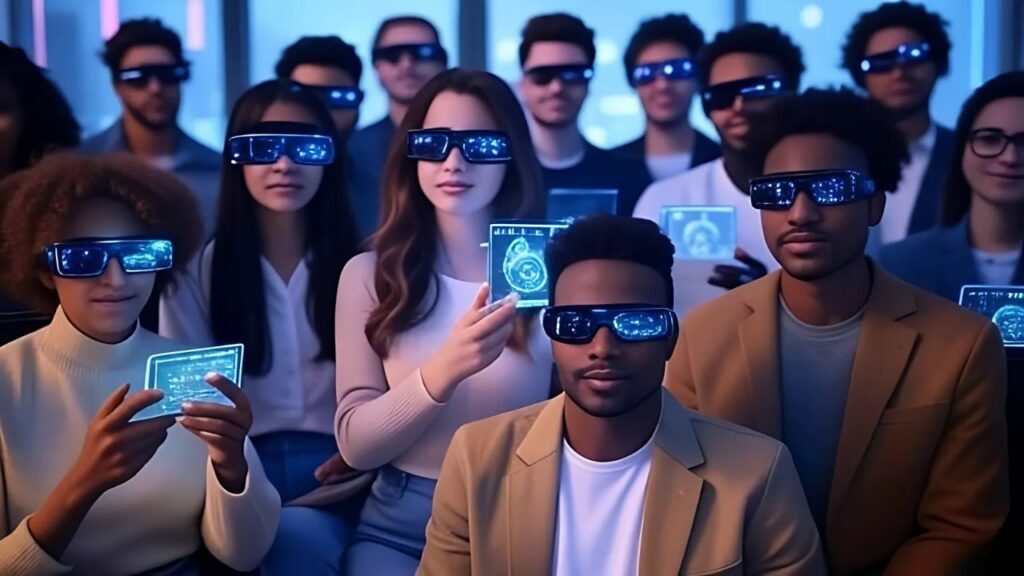Social media isn’t evolving—it’s transforming at a pace we’ve never seen before. For brands, creators, and businesses relying on content to grow, the old playbooks are rapidly becoming outdated. With the rise of AI, new formats, and radically different strategies, we’re stepping into a new era—one where the rules are being rewritten in real time.
In this article, we’ll break down the major shifts that are already reshaping the way social media works and how you can adapt.
Shift 1: The New Brand Strategy
For years, brands treated social media like an art exhibit: carefully curated, visually perfect, and managed by someone behind the scenes. The main account was the only account—an online gallery of polished content, brand-approved graphics, and safe messaging. It looked great, but it wasn’t built to grow.
That’s all changing.
Forward-thinking brands are now adopting a new strategy. The idea? Don’t just create content—create formats. And once a format works, spin it off into its own dedicated channel.
Here’s how it works:
- The main brand account becomes a front door—not a growth engine. Think of it as a landing page for aesthetics and updates.
- Behind the scenes, a dedicated R&D account run by a savvy, socially-native team member tests content—zero rules, zero filters.
- Once a format shows success (typically after three successful tests), it’s extracted and spun off into its own channel, complete with a creator face or faceless content team depending on the format.
- These new channels form the “shows” in the brand’s growing content portfolio—a social media version of a full TV network.
This strategy thrives in today’s “For You” algorithm era. Unlike the old follower-based system, great content can now go viral on a fresh account with zero followers. That means brands are no longer penalized for experimentation—and they can afford to get weird, try new things, and see what sticks.
The long-term goal? Build a portfolio of vertical, format-specific social channels under one brand umbrella—each with its own voice, audience, and purpose. Rethink your brand’s social presence from one account to a network of mini-media properties. This is where the growth—and real brand equity—is heading.
Shift 2: Rise of the AI Influencer
The major shift is one that felt like science fiction just a year ago: AI influencers. And no, we’re not just talking about stylized virtual avatars. What’s coming is far more advanced—and far more human.
Within months, AI-generated personalities will be indistinguishable from real people. Creators and brands will be able to generate influencers with realistic faces, voices, stories, and behavior. These digital personalities will talk, post, and engage just like any real human—and audiences will struggle to tell the difference.
So, what should brands do? Imagine you sell tax software.
Create Two Types of AI Influencers:
- The Expert Authority – An AI expert persona (like Tom the Tax Accountant) who educates, informs, and builds authority in your niche. You control his voice, style, and story—perfect for consistent, expert-driven content.
- The Buyer Lookalike – A relatable AI persona (like Lisa, a small business owner) who mirrors your target customer’s challenges. Through storytelling and shared experiences, they build trust and drive conversions.
These AI influencers can scale infinitely. Dozens of personalities for different niches, customer types, or regions—all part of your broader brand network. This isn’t just about automation—it’s about building a scalable, never-tiring, always-on influence engine that speaks directly to your audience in ways that traditional marketing can’t match.
Shift 3: The Great Divergence
As AI-generated content explodes, one unexpected problem will arise: everything will start to look the same.
AI is great at spotting patterns—and that’s exactly what it will do. When one format performs well (say, a specific style of fitness video or a particular camera angle in cooking content), AI influencers will copy it. Fast. At scale. The result? A sea of sameness. But with every wave of sameness comes its opposite.
In response to the growing uniformity of AI content, human creators will begin to stand out by doing the opposite—wild experimentation. Bright colors, bizarre formats, unexpected stories, disruptive visuals. Anything that breaks the scroll.
This divergence is what will separate humans from AI. Because true creativity—taste—isn’t just randomness. It’s being different in a way that still resonates.
The message for brands and creators: lean in now. Start experimenting with strange formats, new styles, and unexpected storytelling. Be the signal in the noise before the rest of the feed catches up.
Shift 4: The Creator-in-Residence
Brands are finally treating social media as their most powerful growth engine—not just a place for polished posts and reactive content. And because of that, a new role is quickly becoming essential inside forward-thinking companies: the Creator-in-Residence.
Big brands are no longer outsourcing all of their content needs to agencies. Instead, they’re hiring young, socially-native creators in-house—often with full creative freedom—to rebuild their social strategy from the inside out. This isn’t theoretical. For example, Starbucks is hiring a Global Coffee Creator to travel the world and make content.
The Creator-in-Residence isn’t just a content producer—they’re a social architect, a cultural translator, and a native of the platforms where your audience lives. They know what works because they live and breathe content. They’re not guessing; they’re part of the conversation. For brands, this is a no-brainer: invest in internal creative talent, not just ad spend.
Shift 5: The Power of Long-Form Content
The content game isn’t just about virality anymore—it’s about depth. And the smartest creators know: the longer someone spends watching your content, the more likely they are to become a loyal fan—or a paying customer.
This is why long-form content is becoming the holy grail.
Think of it as a funnel:
- Short-form content (Reels, TikToks) is the hook.
- Long-form content (YouTube videos, podcasts, livestreams) is where real conversion happens.
Long-form video builds minutes watched, and minutes watched build trust. Trust leads to sales.
But it’s not just about YouTube anymore. There’s a growing “long tail” of long-form content:
- Livestreams
- Social shopping
- Interactive webinars
- Niche talk shows
These formats let fans and potential customers spend hours with your brand or voice—and that’s where true community and loyalty grow.
If you’re a brand, being first in your niche to master livestreaming or social shopping gives you a massive advantage. You’ll dominate the format before anyone else catches on. And if you’re a creator who prefers deeper, live content—you’re sitting on a green field of untapped brand deals and partnerships.
Shift 6: The Future of Devices Is Closer Than You Think
When we think about social media, we often default to platforms. But there’s another layer that’s quietly shaping the future: hardware.
Right now, most people consume content on their phones. That’s the standard. But in the next 5 years, that won’t be the only game in town. Two completely different types of devices are emerging—and they’re about to redefine how we create and consume content.
Device 1: AR Glasses
Meta has already taken early steps with its Ray-Ban Stories. Google’s working on its own version, and it’s almost guaranteed that Apple will enter the space. These aren’t gimmicks—they’re setting the stage for augmented reality to become a part of daily life. And when AR glasses hit mass adoption, the entire idea of a “screen” will change. Your world becomes the canvas. That means vertical video as we know it today might not even make sense in that context. The question no one has answered yet is: What will content look like in a screenless, spatial world?
Device 2: The Screenless Puck
On the opposite end of the spectrum, OpenAI and former Apple designer are working on something wildly different—a sleek, screenless device (nicknamed the “puck”) designed to be entirely voice- and audio-driven. No screen. No scrolling. Just ambient interaction.
If either (or both) of these devices take off, the implications for creators and businesses are massive. Content will no longer be confined to a glowing rectangle. Instead, you’ll need to think about multi-modal content—some visual, some spatial, some audio-only.
These devices aren’t mainstream. However, the brands and creators who are first to adapt will have a huge head start.
Shift 7: Content-Led Product Development
This next shift doesn’t just change how we market—it completely rewires how we build products.
Traditionally, launching a physical product followed a clear (and costly) roadmap. The problem? You burn time and money before you even know if the market wants it.
Thanks to AI, that process is flipping upside down.
In the new product development model, content leads—before a single unit is produced:
- Use AI to generate dozens (or hundreds) of product mockups.
- Create AI-generated content using those virtual products.
- Publish the content and gather engagement data.
- See what resonates before making anything physical.
- Only then, move to prototyping and production.
The result? Zero-risk product validation. You only make what people already love—because they’ve already responded to it in the content phase.
If you make physical products—whether it’s beauty, fashion, gadgets, or anything else—start experimenting with AI product development tools now. The sooner you start validating with content first, the faster (and safer) your path to market becomes.
Shift 8: The Rise of Worldbuilding
Out of all the shifts happening in social media, worldbuilding might be the most exciting—and transformative.
We’re leaving the era of “just videos and posts” behind. The future? Fully immersive interactive worlds.
This isn’t about consistent branding with matching fonts and aesthetic feeds. This is about places—virtual spaces your audience can step into and experience. A recent demo from 4DV, a company in China, used a technique called 4D Gaussian Splatting to turn regular video into a dynamic environment. You could literally move through the video as if you were inside it. No headset required. Just your browser.
Now, imagine what happens when this tech is paired with AR glasses. Suddenly, your product demo, brand story, or customer journey becomes something users can walk through in real time.
This level of immersion is still early—but it’s coming. And brands that are ready for it will stand out in ways we’ve never seen before.
Tactical Strategy 1: Launch for Coverage
While the shifts above are about the future, which strategy can work right now?
Most brands are focused on paid ads or influencer partnerships. But there’s another way to generate massive attention—for free.
It’s called Launch for Coverage. The idea is simple: engineer a story so unique, wild, or surprising that creators, journalists, and influencers can’t help but talk about it.
Ask yourself: What story could I create that people would want to share? You don’t need huge budgets—just creativity and timing. Low-cost, high-viral moments can change your growth trajectory overnight.
Tactical Strategy 2: Affiliate Bootcamp
Affiliate marketing isn’t new. Typically, a brand sets up an affiliate program. People sign up. Then… they’re on their own. No training. No support. No direction.
Now, imagine flipping that script. What if you trained your affiliates like creators? What if you gave them templates, best practices, and coaching so their content actually converted?
Affiliates not only get commissions, but also free content training? It’s a win-win. Affiliates become better marketers. Brands get better-performing content. Everyone earns more.
Final Thoughts on the Future of Social Media: A Roadmap for What’s Next
Here’s a quick recap of where social media is headed—and where the opportunity lies:
- New Strategy – Build social portfolios, not just single accounts.
- AI Influencers – Create characters that scale and convert.
- The Great Divergence – As AI makes content look the same, humans will stand out with wild creativity.
- Creator-In-Residence – In-house creators will reshape brand content from within.
- Long-Form Funnels – Move people from short clips into deep formats like podcasts and livestreams.
- Future of Devices – Be ready for content that fits AR glasses, screenless devices, and mobile.
- AI-Led Product Development – Use AI to test product ideas with content before spending on inventory.
- Immersive Worldbuilding – Turn your brand into a world people can step into.
And two strategies you can use right now:
- Launch for Coverage – Craft buzzworthy moments that drive free media.
- Affiliate Bootcamps – Train your partners like creators and watch performance rise.
The future of content isn’t just changing—it’s accelerating.
Stay early. Stay experimental. And above all, build what doesn’t exist yet.



